SNOW’S COME AND SO HAS FRUIT
Free and Attractive Mulch
Beautiful. Floating down from the sky. A white blanket of “poor man’s manure.” That’s what gardeners and farmers have called snow.
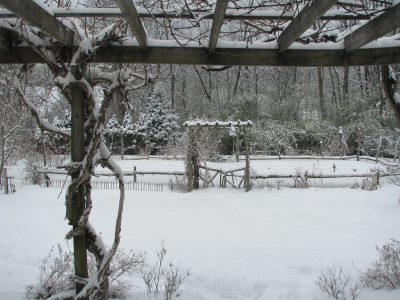
In fact, snow does take some nitrogen from the air and bring it down to ground level for plant use in spring. Not that much, though. Just a few shovelfuls of real manure could supply the same amount of nitrogen as a blanket of snow.
Mostly, what I like about the 15 inch deep fluffy whiteness now on the ground is the way it insulates what’s beneath it. Fluctuating winter temperatures wreak havoc on plants, coaxing them awake and asleep and awake and asleep as air temperatures go up and down and up and down. Each time plants are awakened, they become more susceptible to subsequent cold, the whole problem exacerbated with borderline hardy plants.
Anticipating cold weather and snow, last fall I cut back a cardoon plant and two artichoke plants, covered each with a large, upturned plastic planter, and then smothered everything in autumn leaves. 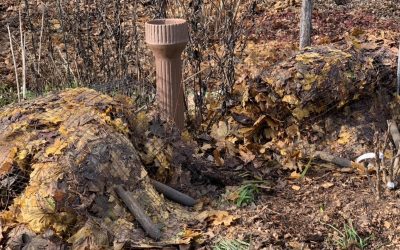 Both kinds of plants are probably cold-hardy to about zero degrees Fahrenheit, but here winter temperatures, except last winter, typically drop to about minus 20 decrees Fahrenheit. That snowy blanket provides extra protection that the plants might need — especially after last Saturday’s unseasonal low of minus 8 degrees.
Both kinds of plants are probably cold-hardy to about zero degrees Fahrenheit, but here winter temperatures, except last winter, typically drop to about minus 20 decrees Fahrenheit. That snowy blanket provides extra protection that the plants might need — especially after last Saturday’s unseasonal low of minus 8 degrees.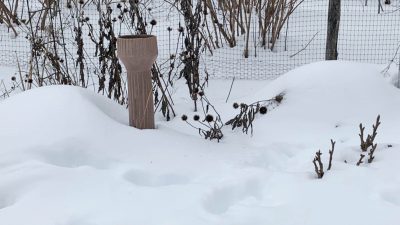
Hardy orange (Citrus trifoliata) is another plant to benefit from snow cover. It’s a Citrus that’s allegedly cold-hardy into zone 5 (-20°F minimum temperature). I planted some seeds outdoors a few years ago and, while their roots survive winter cold, the tops die back to resprout each spring. I also planted out a more mature hardy orange that was given to me; it also suffered some cold damage.
The deeper this winter’s snow and the longer it stays deep, the more of the hardy oranges’ stems will survive till spring. Perhaps, helped along with global warming, enough of the above ground parts of the plants will survive to reward me one year with sweet-smelling blossoms and, less appealing, their very puckery fruits.
Multiplying Currants and Grapes
Last fall, I cut stems from my black currants and grapes into 8 inch lengths. In the bare ground between some dwarf apple trees, I scratched some lines and pushed a straight-bladed shovel into the ground on that line. Levering the handle of the shovel opened up just enough space in which to shove one or two of those cut stems, distal ends up, right up to their topmost buds. Then I moved along the scratched line, pushed the shovel in again, shoved in more stems, and so on down each line. If all goes well, each of those stems will grow into a good sized plant that I can dig up and transplant next autumn.
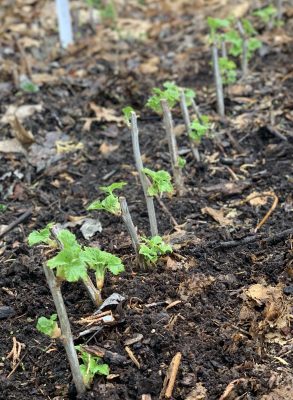
That is, unless alternating freezing and thawing of the soil heaves those stems up and out of the ground. I’ve seen it happen, leaving a row of carefully inserted stems sitting on top of the ground by winter’s end.
All of which is another reason I’m thankful for the snow. In addition to protecting plants from cold, the blanket modulates soil temperatures, keeping cold soil cold, which is how I’d like it to remain until spring. I could have — should have — thrown some fluffy, organic mulch, such as leaves or straw, over the stems to do the same thing. But I didn’t. I hope the snow stays.
Where One Plus One Does Not Equal Two, Figuratively Speaking
The harvest has begun: I picked the first fruit of the season this week. Not only that, but it was the first fruit I harvested from the particular plant. The fruit was a Sunquat, planted in a pot a year and a half ago. It summers outdoors and winters indoors, basking in sunlight streaming through a south-facing window.
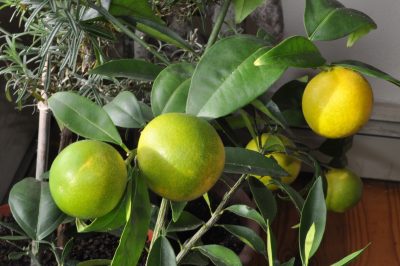
Not many people have heard of Sunquats. I hadn’t. Citrus plants hybridize freely and Sunquat is one of many citrus hybrids, this one a mating of kumquat (Citrus japonica) and Meyer lemon. I happen to be a big fan of the tart flesh and spicy, sweet skins of kumquat fruits. I also happen to be a big fan of Meyer lemon, which is not a true lemon but is probably a hybrid of lemon and sweet orange.
Meyer lemons are juicy and somewhat sweet, with a flowery aroma. They also bear prolifically. As testimonial to their precocity, I once had a cutting that flowered soon after rooting, when it was only a few inches tall.
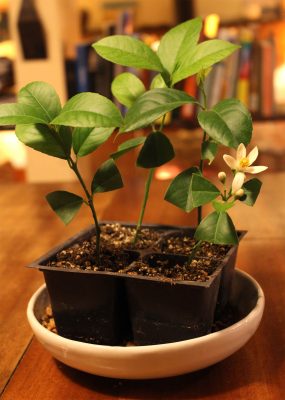
So what could be bad about combining kumquat and Meyer lemon? A Sunquat! The skin was sour without picking up any of the spicy tang of a kumquat’s skin. The flesh was much less puckery than kumquat or lemon, but was uninteresting, just bland. Perhaps harvesting a bit underripe, before the skins turn full yellow, will put some pizazz in a Sunquat.
If not, I’ll stick to growing Meyer lemons and kumquats, each on their own and with their own delectable flavor.
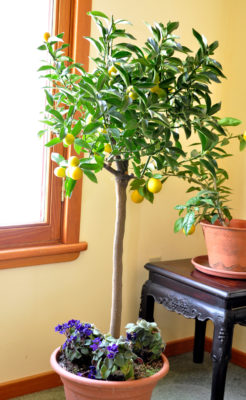

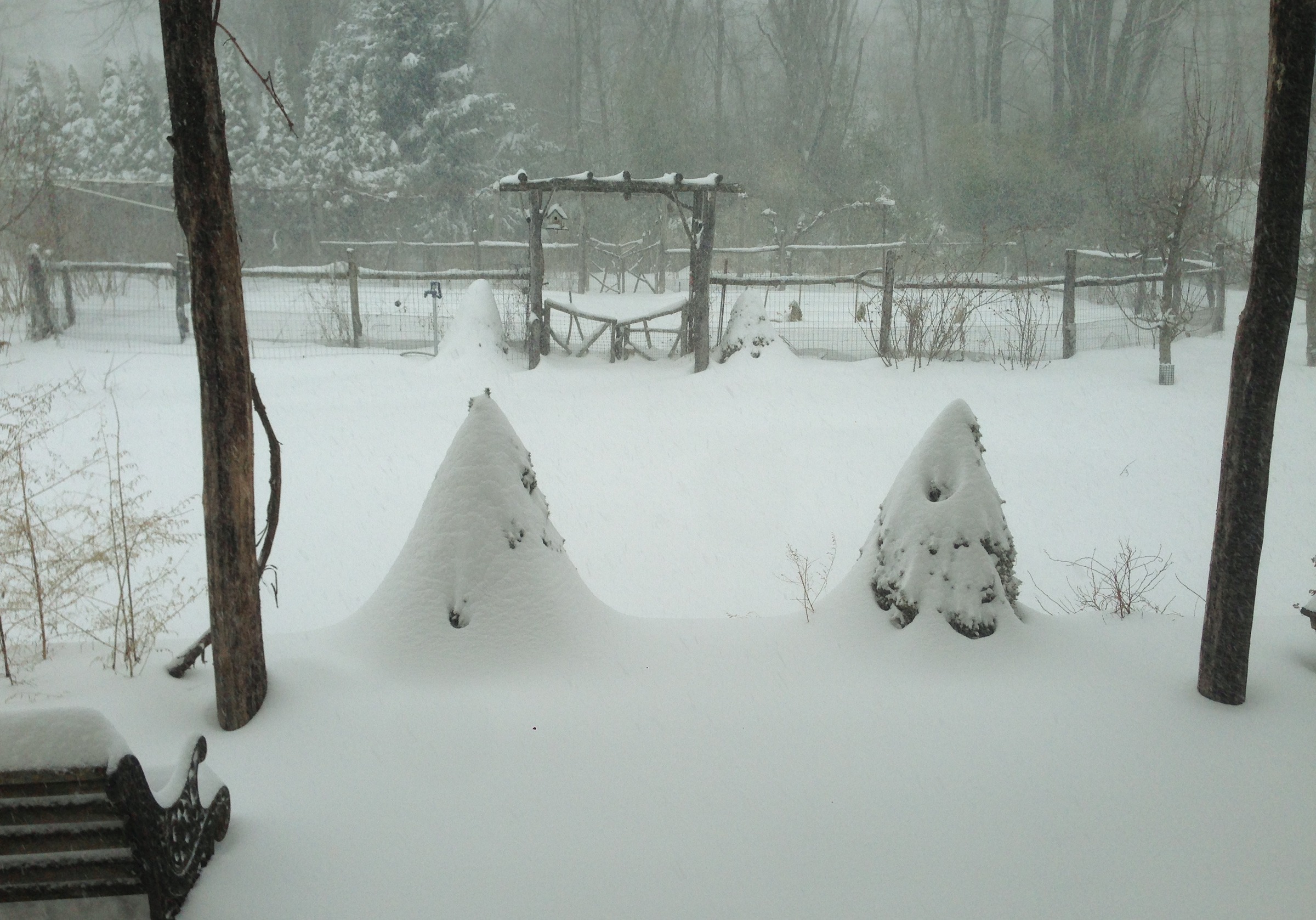
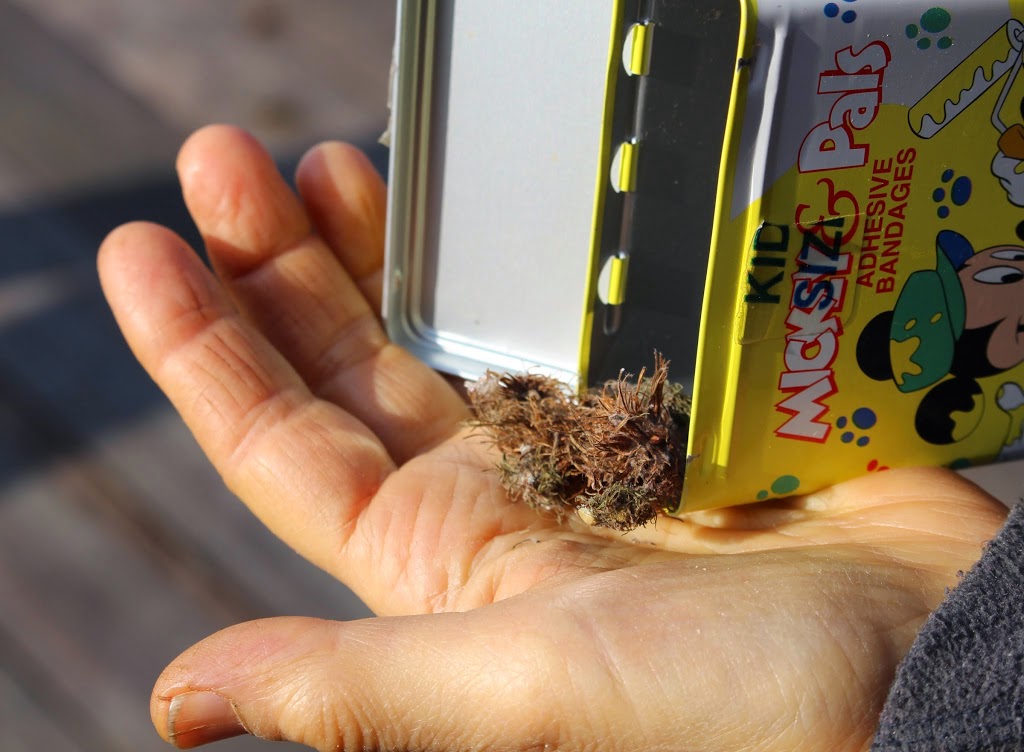

great insights and tips! So true that snow can be a wonderful insulating blanket in the garden.
Love your blogs.
Sue
Meyer lemons!!
I think I’ll plant some.
Carin
Hi Lee:
You seem to put everything into a scientific nature, even snow, I do have to agree with you however. I noticed just yesterday a new raised bed with a beautiful blanket of snow. It was put there much better than I could have done.
Well, I just want to Thank You for a wonderful year of great information and wish you a Happy Holiday and better New Year.
Best,
Ken from Rhode Island
I do appreciate the beauty of snow but chose to highlight the “scientific” side in that post.
Hello Lee, really enjoy your postings and have forwarded to quite a few of my friends. I have a lemon tree gifted to me by a friend this summer, about 3 feet high at this point, no blossoms at all, it’s in a cool sunny spot, wondering if you have any advice for how to get it to bear lemons… thanks so much
How much it bears might depend on the variety. Meyer lemon is particularly prolific. Sunlight is also important. Your plant would enjoy being outdoors in the sun in summer, if it’s not already spending that time there. Don’t put the plant out abruptly in spring; harden it off gradually, like tomato seedlings.
Let the skin of the Sunquat fruit turn to an orangish color before eating. At least with Meyer Ls, the fruit is sweetest when it stays on the tree until turning a yellow-orange color.